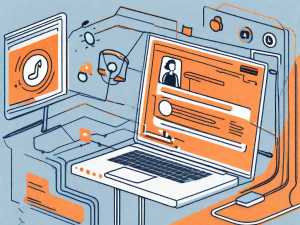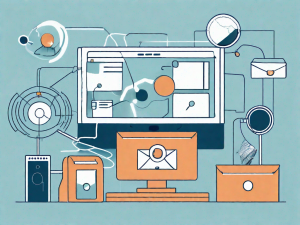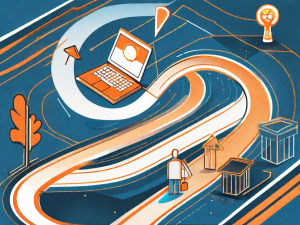The term customer lifecycle management sounds like a topic that would be suited better for an MBA thesis than a small business strategy.
It involves understanding concepts that include the key factors of generating more revenue at lower costs and bringing in more profits.
It also involves developing strategies that you can use not only to reach your customers, but to keep them for life.
Though customer lifecycle management is a complex process, understanding its intricacies is imperative in order for your business to enjoy years of success.
Yes, there are countless books to be read on the topic.
However, in this fast-paced life, there isn’t always time to dive head first into a 300-page explanation.
So, we’ve decided to provide you with the abridged version.
Here we’ve broken down the customer lifecycle management process into 5 easy steps.
The 5 Steps of Understanding Customer Lifecycle Management
Step 1: Reach
Your reach is when and where you make your first contact with your customers. It is the first time they become aware of your brand.
You can reach your customer in any number of ways (i.e. magazine ads, coupons in the local circular, word of mouth, etc.)
However, in the current market, it’s common knowledge that people are spending a majority of their time online.
According to @pewresearch, 26% of US adults are almost always online. 77% of adults go online daily. #consumerbehavior #customerexperience #lifecyclemanagement Click To TweetAccording to Pew Research, 26% of US adults are almost always online. The same study found that 77% of adults go online daily.
So, the key is to get in front of them as they surf the web.
Today, 97% of marketers are using social media to reach their audiences (Hubspot).
Here’s Forbes New York Business Council (via Each Penny Bookkeeping) with advice on how to reach the hyperconnected masses.
Content marketing is making a real impact on #SmallBusinesses looking to reach customers at an affordable price. Here’s how it can boost your #Entrepreneurship. https://t.co/YZX6CGUXFs pic.twitter.com/SHVfo4P1TC
— Each Penny Bookkeeping, LLC (@eachpenny) June 28, 2019
Step 2: Acquisition
So, you’ve made initial contact, and the potential customer knows who you are.
Now, it’s time to make a good first impression.
Remember, any interaction you have with a customer post-reach (and pre-conversion) will have a direct effect on whether they convert or head off to greener pastures.
In today’s market, consumers are constantly bombarded with pop-up ads, mass email campaigns, and targeted remarketing posts.
So, standing out in the crowd isn’t easy.
However, it can still be done if you personalize your social media strategy.
In fact, 61% of marketers list social media as their top acquisition channel over SEO and Direct Traffic (Yotpo).
D2C Brands Point to Social Media As Their Leading Customer Acquisition Channel https://t.co/U7Ea3elEGs pic.twitter.com/6fEAGvgDSi
— Grey Visual Mktg. (@GreyVisual) June 25, 2019
The key to social media acquisition is to connect with your audience on a personal level.
79% of consumers want to see that brands care, before they consider making a purchase (Wantedness).
So, interact with your followers by liking and replying to their posts. Show support for local charities. And, post quality content that they’ll find worth sharing.
If they can relate to you, they can trust you. And, if they can trust you, they’ll buy from you.
Related Post: Are Spelling Mistakes Costing You Customers
Step 3: Conversion
We’ve now arrived where the magic happens (or it doesn’t).
This is the stage where the “window shopper” becomes your customer. This is where it gets real.
You have been preparing for this moment by providing them with content relevant to their interests…by showing them you can relate to them (as discussed in step 2).
According to marketing data experts at Aberdeen, targeting users with content relevant to their position along the buying process yields 72% higher conversion rates.
So, you’ve already spent a lot of time tailoring the courtship process to their needs.
Why stop now?
Continue delivering the best brand experience you can possibly provide them with throughout the length of the buying process.
Companies that prioritize the customer experience generate 60% higher profits than their competitors. @KapowEvents #customerexperience #customerjourney Click To TweetData collected by Kapow shows that companies that prioritize the customer experience generate 60% higher profits than their competitors.
Make sure you are on standby to assist and answer any crucial questions. If you’re not highly responsive at this stage you will most likely lose them.
In addition, make the entire process as seamless as possible.
For example, provide a simple checkout process to reduce friction. Have clear timelines on order fulfillment and visible policies on returns and guarantees.
Check out the Ultimate Guide to Customer Experience by Convince & Convert below.
The Ultimate Guide to Customer Experience | Convince & Convert https://t.co/15HHJl9Pl8 pic.twitter.com/2AjMFrhJcx
— Andreas Meyer (@MeyerDigital) July 1, 2019
Step 4: Retention
So, you made the sale. That doesn’t mean your work is done. Far from it.
The customer lifecycle doesn’t stop at the sale. And, neither does your effort to make them fall in love with your brand.
For two reasons, this stage is even more important than the conversion stage.
- Your existing customers are your most valuable asset. 80% of your future profits will come from just 20% of your existing customers (Supplygem).Your existing customers are your most valuable asset. 80% of your future profits will come from 20% of your existing customers. #customerretention #customerservice #lifecyclemanagement Click To Tweet
- Just because they’re your customers now, doesn’t mean they’ll be your customers forever. This is the stage where customers are easily lost. If you’re going to keep them, you have to continue providing a superior experience. 47% of customers surveyed have switched companies after a single instance of poor customer service (SmallBizTrends). 47% of customers surveyed have switched companies after a single instance of poor customer service. @smallbiztrends #customerexperience #customerservice Click To Tweet
The best way to provide an outstanding customer experience is through personalization.
Unfortunately, cookie-cutter mass email campaigns and general advertisements won’t get the job done.
So, utilize CRM software to compile individualized, detailed customer profiles. Then, use that information to build an even stronger relationship with them.
Always address them by name. Send them special offers based on their interests. And, never forget to express your appreciation for their continued support.
Here’s a great resource from Advalo that contains more helpful strategies on how develop relevant business-to-consumer communications.
How relevant messaging impacts customer retention and loyalty.https://t.co/4rjAwU3Y0a
— Advalo (@Advalo_US) July 3, 2019
Related Post: How to Improve Trust with Customer Support Software
Step 5: Loyalty
This is the stage where all of your efforts pay off.
By this point your customer has made a purchase for the second time, or maybe even a third.
Note: Research by InMoment shows that 60% of loyal customers will purchase more frequently from their preferred companies.
60% of loyal customers will purchase more frequently from their preferred companies. @WeAreInMoment #customerloyalty #customerjourney #customerservice Click To TweetIn addition, your dedication to forging a genuine connection with your buyers has not only turned them into loyal customers, but it’s also turned them into your brand advocates.
In fact, your customers are so thrilled with their experience that they’re tweeting your praises and sharing their love for your product/service with their friends and family.
According to Hubspot Research, 81% of customers trust recommendations from family and friends over those from companies.
The Refer A Pal article featured below has great tips on how you can harness the power of customer loyalty to increase your customer base.
Increase your customer base by harnessing customer loyalty. Find out how at https://t.co/jP2mj4VAXj. pic.twitter.com/6jTKiGJqhx
— referapal (@referapal) July 1, 2019
Congratulations! You’re now on your way to growing your business and expanding your customer base.
For more business tips and customer service advice follow our business page on LinkedIn or Twitter.




